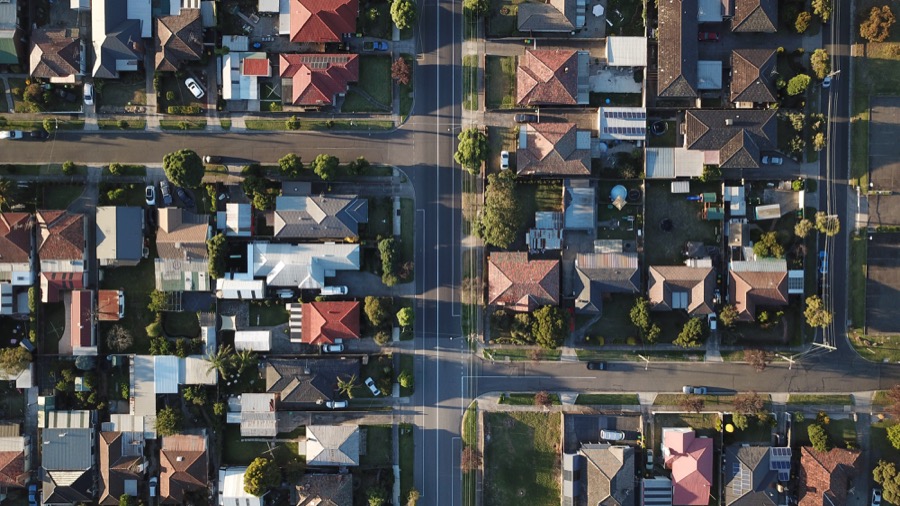As the country continues to recover from the pandemic, and the Government grapples to get inflation under control, the Reserve Bank of Australia (RBA) again increased the cash rate by 50 basis points this month, bringing it to 1.85%. This will of course impact households and businesses carrying a high amount of debt and lead to an overall reduction in property affordability.
We are seeing an increase in enquiries about fixed rate lending, but in most cases it is too late to move now, with fixed rates up to around 5% already. Commentators are predicting that there will be more increases to the cash rate this year, peaking at between 2-3% in 2023. This is still some way short of the all time high which was 17.5% back in January 1990!
Inflation is forecast to peak later this year and then decline back towards two to three percent next year.
Global inflation is high, boosted by COVID-linked disruptions to supply chains, Russia’s invasion of Ukraine and strong demand which is putting pressure on productive capacity. As global supply-side problems continue to ease and commodity prices stabilise, Australian inflation is expected to moderate. The RBA is working on the basis that higher interest rates will also help establish a more sustainable balance between the demand for and the supply of goods and services.
What happens when interest rates increase?
In simple terms, raising interest rates makes borrowing more expensive, but also leads to more returns on savings and super. When borrowing becomes expensive, this can also lead to less demand for goods and services as individuals and businesses tighten their belts.
Higher interest rates will lower inflation which benefits savers and some investors. Cost of living is currently front of mind for consumers, with the price of food, materials and fuel surging – another reason for authorities to try and curb inflation.

Rising interest rates are expected to stabilise the increase in property values across Australia. While interest rate rises will certainly have some impact on demand for property in WA, experts at REIWA believe that there will not be enough new properties and listings coming to market to sufficiently stifle competition amongst buyers.
Is it too late to lock in interest rates?
In most cases, yes. Rates have already gone up four times in four months and analysts predict we will see at least one more increase with suggestions that the cash rate could reach around 2.35%. This in turn is likely to drive the lending rate up to around 5 – 5.5%, which is where most fixed rate products are sitting now. So sit tight and wait for a while because now is not the right time to lock in interest rates. Contact us for more detailed advice.
Should Australian property investors be worried?
Many commentators point to the fact that an increase in interest rates was inevitable, signalling a return to more sensible rates and greater normality in the markets. The record low of 0.1% was always an emergency measure to protect the Australian economy from the impacts of the COVID-19 pandemic.
These recent and likely continuing increases in interest rates are regarded by economic leaders as an important step in the withdrawal of the extraordinary monetary support that was put in place to help secure the Australian economy. The RBA considers that these steps are part of the process of normalising monetary conditions in Australia over the months ahead and returning inflation to target levels.
The Australian economy remains resilient with Australia insulated against potential global shocks, and our natural resources continuing to be in demand globally. Surveys point to a lift in wages growth as companies compete for staff in a tight labour market – higher wages will to some extent protect homeowners against the impact of further interest rate rises.
WA’s unemployment rate is at a 13-year low of 2.9%, well below the national rate of 3.9%. The State Government believes that this highlights our economy has secured a soft landing as WA has transitioned to living with COVID-19.
Western Australia continues to be one of the most affordable places to buy property in the country according to data released by the Real Estate Institute of Australia (REIA) as part of their Real Estate Market Facts Report for the March 2022 quarter. Perth has the most affordable median house sale price of any capital city at $525, 750 – Sydney’s median is $1.59 million and Brisbane sits at $760, 000.
Listings for sale on reiwa.com remain low at 8541 at the end of June which is keeping competition amongst buyers high, especially as the state’s population increases following the reopening of inter-state and international borders. Market commentators suggest that listings need to reach a level of 12000 to 13000 to achieve a balanced market figure and reduce competition. Members of REIWA have reported strong market conditions throughout Perth, particularly in the first half of 2022, with price growth sitting at 4% for the 2022 calendar year to the end of June.
The rental market continues to be very tight, with an exceptionally low vacancy rate. Available data to 24 July in Perth shows that there were 2324 properties for rent in Perth at the end of the week, which is 16.1% lower than a year ago. Opportunities exist for investors to step in and improve the supply of rentals in Perth, with a median leasing time of 16 days offering rapid returns for landlords.
Research released by the Australian Prudential Regulation Authority in January showed that mortgage holders were on average 45 months ahead on their repayments, up from a pre-pandemic figure of 32 months ahead. Some of this increase can be attributed to the growing popularity of offset accounts which work to reduce the amount you pay in interest on a mortgage. Australians were already known to be prudent savers, and the impact of the pandemic which curbed spending on social activities for example, coupled with record low interest rates, has given many people the chance to squirrel more money away.
Top tips to combat interest rate rises
- Consider an offset account. Linking an offset to a variable rate loan helps you pay off the loan faster
- Line up your costs – adjusting your repayments can help to manage your budget and align your direct debit with regular income
- Build in flexibility – fixing the interest on part of the loan can give a period of payment certainty. If you split your loan between fixed and variable rates you will still have flexible features like offset available.
- Take advantage of offers in the market such as cashback which may be available if you refinance.
WA’s affordable housing and strong economy means that most property owners and buyers are in a good position to be able to afford price increases and manage interest rate rises. Don’t panic. Now is a good time to reassess your options, explore the market and ensure that you are getting the best deal.
Southshore Finance is one of Perth’s most established commercial finance brokers – with our knowledge of lenders, their policies and current market conditions, we can source and negotiate the very best terms, conditions and rates. Talk to us today about how to secure the best solution for you and your business in the current market.

